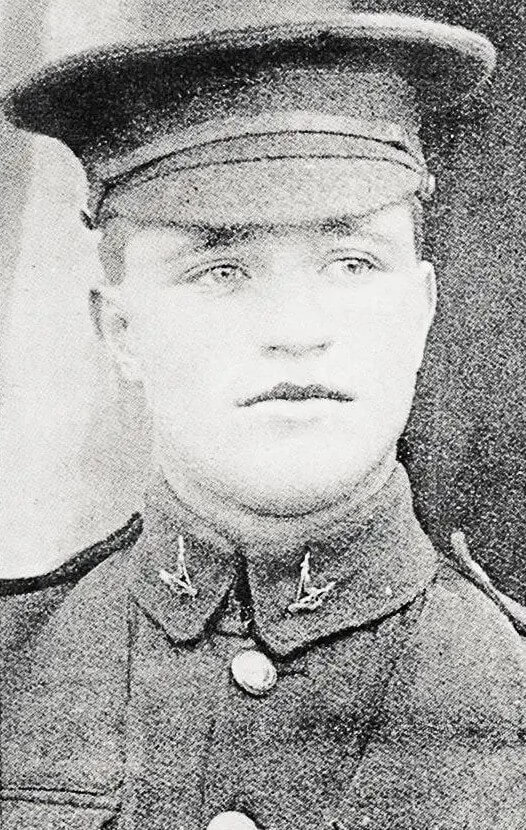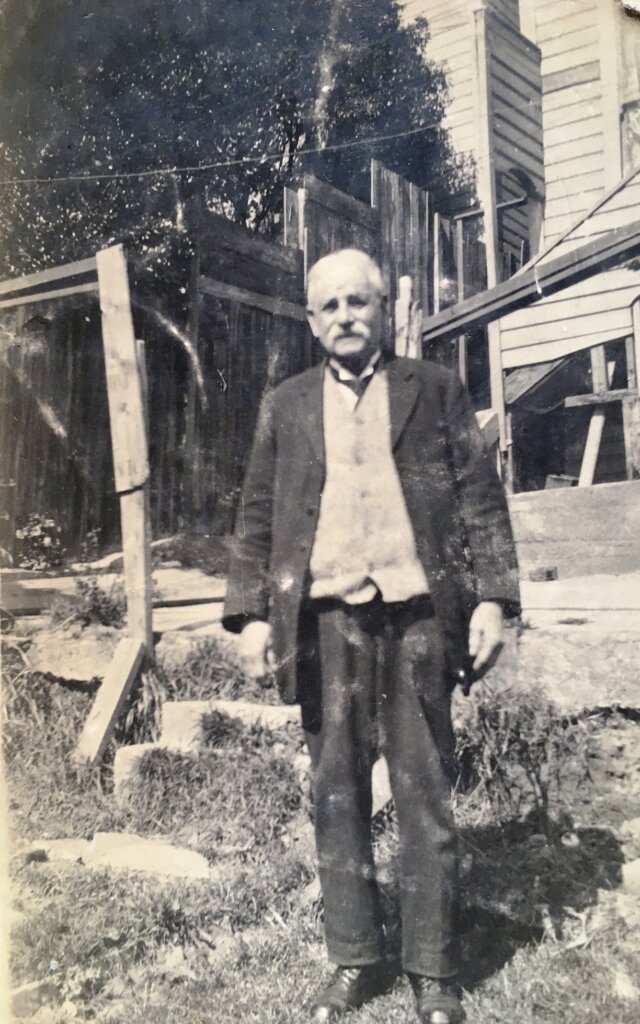The poisoned thumb of Ohaupo boot maker Josef Sittauer was said to have led to the amputation of his hand, reported a Waikato Argus correspondent in 1902.

Carl Sittauer had been a farmer prior to WW 1 but died at Gallipoli in 1915.
The news brought an outpouring of sympathy and a collection of donations for the man and his wife and eleven dependents. Josef Sittauer had been born in Bohemia (now Czech Republic) in 1846. In November 1875 he, his wife Margaretha (née Schischka) and their two small sons, Wenzl and Josef, departed Bohemia for Hamburg as part of the fourth group of Bohemian settlers to New Zealand. They sailed from the Port of Altona on the Shakespeare in 1875, arriving in Wellington under quarantine in January 1876. In early February they boarded the coastal freighter Ladybird, which was headed for “the north”.
Josef and his family settled at 100 Great South Road, Ōhaupō in a whare on the property of Margaretha’s sister Barbara and her husband Michael Krippner. Josef, although a boot maker by trade, began working as a farmer and beekeeper. Within months of their arrival Margaretha had died from typhoid. Wenzl and Josef junior were cared for by their Aunt Barbara and cousin Anna until March 1878 when Josef placed them in the care of Destitute Children’s Home in Auckland for three months.

Josef Sittauer
By May 1879 Josef had purchased three acres of land at 169 Great South Road where he built his own home and boot making shed. Two months later he married Helena Mary Stancliffe of Auckland. Helena became mother to Wenzl and Josef junior, the family eventually growing to 13 with Josef and Helena having 11 children. Josef moved his boot making business into Ōhaupō township, and in 1881 he was naturalised.
Wenzl (who became known as Vincent ) and Josef junior attended Ōhaupō School but they struggled due to poor English skills. As was customary in those days, when sons were aged 12, they began working, the oldest following the father’s trade. It is presumed Wenzl began boot making however tragedy struck in December 1885 when Wenzl, 13, died of tetanus. Josef junior then aged 11–12, probably replaced Wenzl in boot making. In February 1902, 15-year-old Peter drowned in Horseshoe Lake.
Two months later the alleged amputation of Josef senior’s hand was announced by the Waikato Argus. This was followed two months later by another report stating Josef was back at work – advertising his thanks for past favours and promising footwear ‘repairs neatly done and prices reasonable.’
One hundred and twenty two years later, Josef senior’s great granddaughter, Mary Sittauer, dubious of this report, pointed out that it did not seem credible that two months after an amputation a person would be capable of operating machinery which required precision to manufacture and repair footwear. Full prosthetic hands were not in use at that time and there was no oral history or family knowledge of the accident or amputation. Archival hospital records did not exist. Finally, a family photo emerged of Josef senior taken c1923–26, conclusively showing that he had two hands prior to his death in 1926.
The only other solution to the puzzle was that it was Josef junior who lost his hand and through some mish mash of family information the report transposed the event onto Josef senior. There is no family knowledge of Josef junior, his life, and whereabouts nor are there any photos of him.
Of Josef senior’s other sons – in the early 1890s, John Thomas began work farming, beekeeping and boot making. Disenchanted with his wages being taken to help educate his sisters at St Mary’s in Hamilton East he moved to the Hutt Valley, marrying at 21 in 1901, and starting his own boot making business. Martin left for Auckland some time after Peter’s drowning and was still in Auckland 1907.
It is possible that Josef junior and Martin went to relatives in Bohemia – Martin is known to have been in Hamburg in 1908 but from then onwards, nothing is known. Vincent Daniel became a blacksmith, Frank a butcher, Matt a farmer, and Lawrie a bootmaker later joining Vince in his blacksmith business.
Vince and Matt began the Sittauer Road dairy farm in 1925 where Lawrie assisted. Carl also had been a farmer prior to WW 1 but died at Gallipoli in 1915.
Ōhaupō’s Sittauer family’s contribution to the district was significant, now brought to light again in righting a reporting error from the pages of the past.









